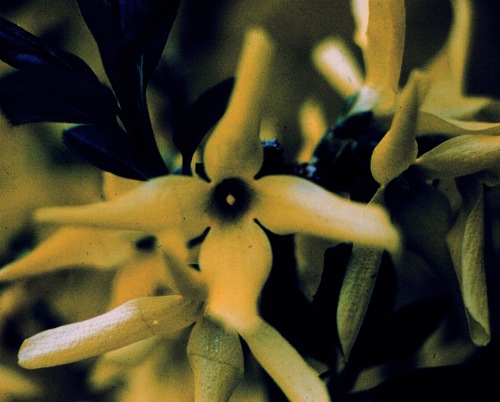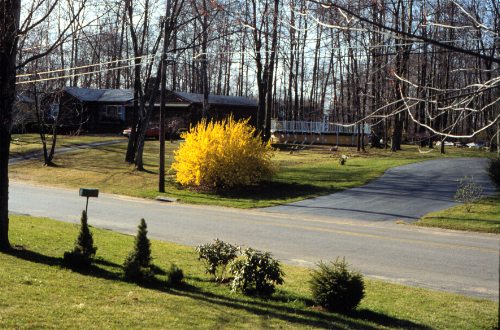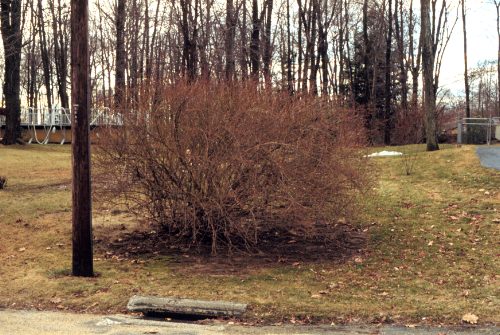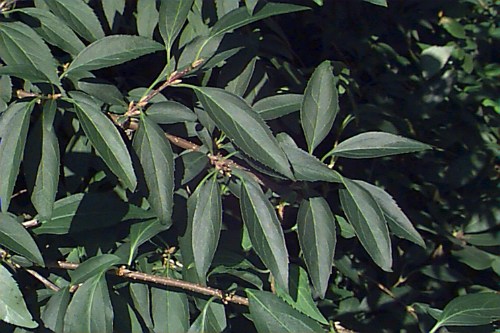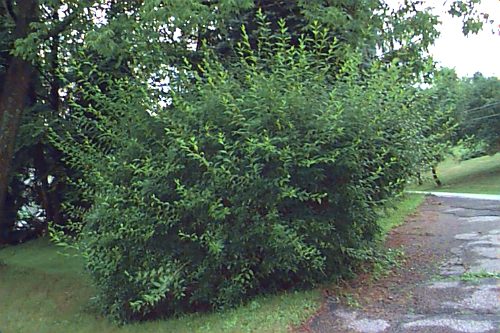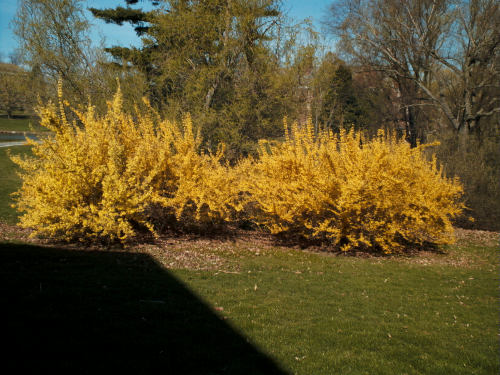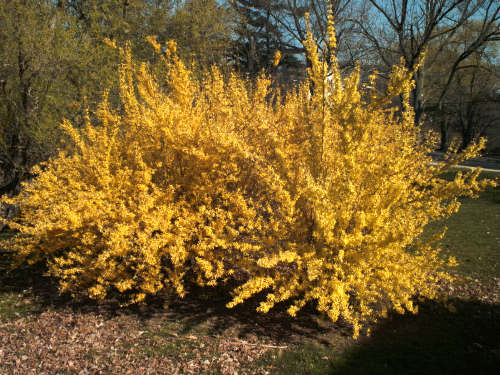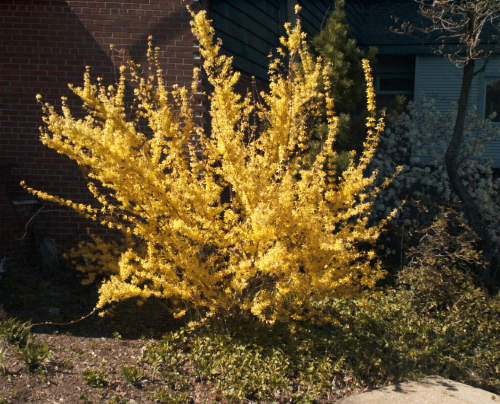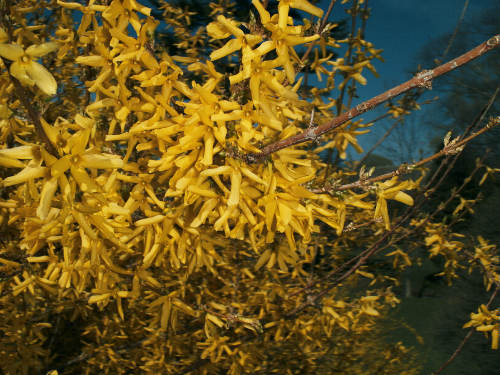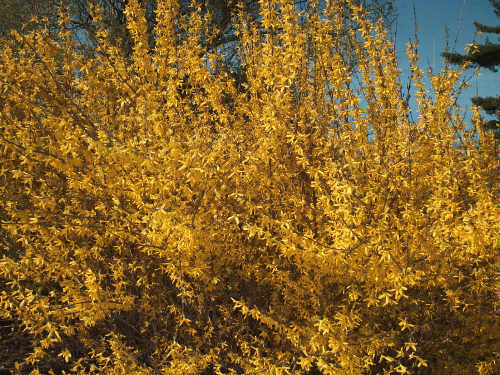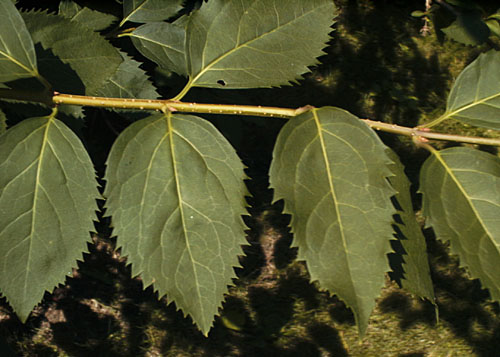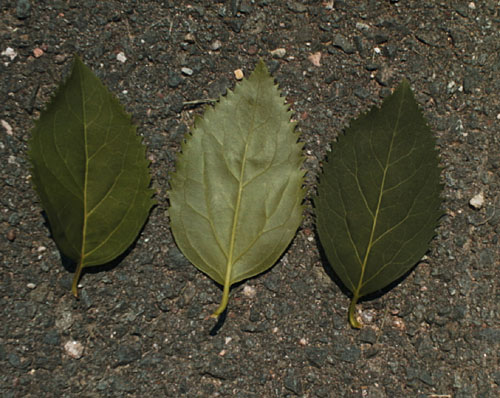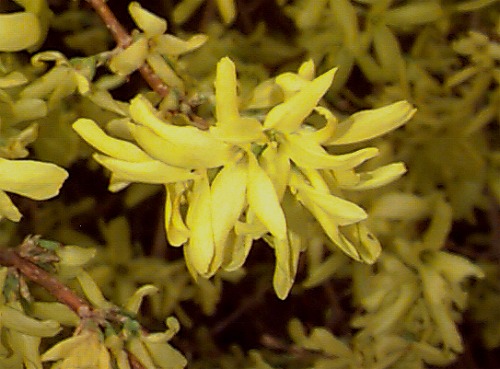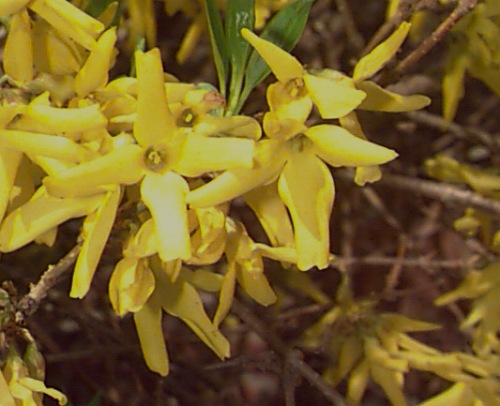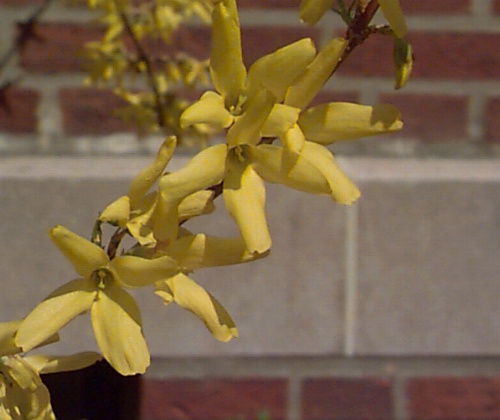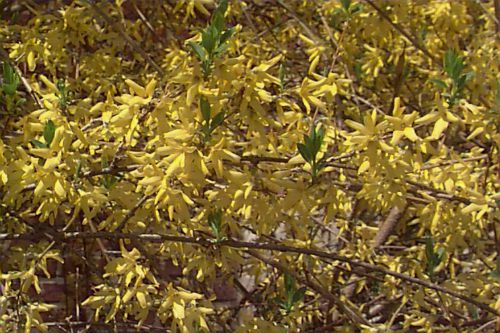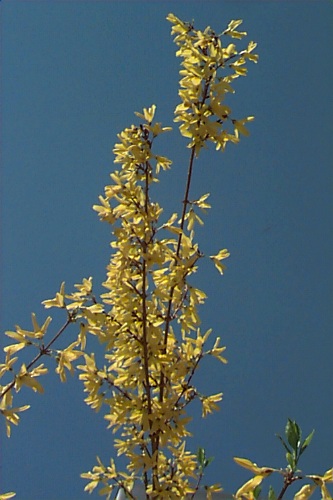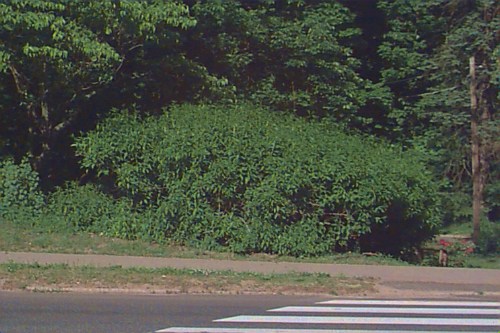Forsythia x intermedia
Border Forsythia
Oleaceae
ExpandHabitat
- of hybrid origin (F. suspensa x F. viridissima)
- zone 5
Habit and Form
- a deciduous shrub
- 8' to 10' tall and 10' to 12' wide
- an upright and spreading shrub
- rank and vigorous grower
- possesses upright shoots as well as arching over shoots
Summer Foliage
- opposite arrangement
- ovate to lanceolate toward the tips
- toothed margins
- 3" to 5" long and 0.5" to 1" wide
- medium to dark green color above and lighter on the underside
- stems are squarish with prominent lenticels
Autumn Foliage
- foliage holds late into fall
- green to yellow-green
- best plants have purple tinges over yellow base color
Flowers
- brilliant yellow color on good selections
- 1.25" to 1.5" long
- flowers have 4 lobes
- flowers mostly in clusters of 2 to 6
- blooms in March and April
- very showy bloom, lasting 2 to 3 weeks
Fruit
- a small brown capsule
- not of ornamental importance
Bark
- yellowish-brown color
- raised lenticels are prominent
Culture
- adaptable to many soils
- easily transplanted and established
- full sun needed for best form and to maximize flowering
- tolerant of partial shade
- tolerant of urban conditions
- easily pruned or sheared, although this is not he way the plant should be treated
- occasional rejuvenation pruning may benefit older plants
Landscape Use
- shrub borders
- mass plantings
- screening
- used primarily for its showy early spring bloom
- overused in many areas
Liabilities
- really only single season plant. It disappears into the landscape anytime it isn't in bloom
- flower buds only cold hardy to -10 to -15o F while plant is hardy to -20 to -25 degrees F.
- often only blooms below the snow line in zones 4 and 5
- a rampant grower that can be difficult to keep looking neat in the landscape
- needs occasional rejuvenation pruning
- overused
ID Features
- unmistakable in bloom with yellow four-lobed flowers
- solid pith at nodes, chambered pith in internodes. Vigorous shoots may have hollow internodal pith
- squarish stems with prominent lenticels
- opposite leaf arrangement
- upright and overarching branches
Propagation
- easy by cuttings
Cultivars/Varieties
'Arnold Dwarf' and 'Courtasol' (Gold Tide®) - These are two popular dwarf forms that may be utilized as groundcover since the usually fail to surmount 3' tall. Blooming may not be as profuse as other forms.
'Evergold' and 'Gold Leaf' (also listed as 'Goldleaf') - These are forms that maintain bright yellow leaf color all season long.
'Fiesta' - This cultivar is one of the best with variegated leaves. The foliage is green with a deep yellow center, and the markings are retained well. Other variegated cultivars are coming onto the market, as well.
'Karl Sax' - This classic cultivar bears deep yellow flowers which are borne horizontally. The growth habit is dense and bushy, and bud hardiness is better than some older cultivars.
'Lynwood' (also known as 'Lynwood Gold') - This popular form is a very heavy bloomer with bright yellow flower that open very wide and are well distributed along the branch. It's an upright grower that usually develops purple-tinged fall color.
'Spectabilis' - This cultivar has been in cultivation for many years and serves as a standard. The flowers are borne profusely in the leaf axils and are bright yellow. Bud hardiness may be better than other older varieties. The plant is also a vigorous, large grower to 10' tall.
'Spring Glory' -This form is marketed as a better choice for warmer zones (USDA zones 7-8), but it nonetheless is widely popular. The plant grows strongly to 10' tall and the abundant blooms are deep yellow.
